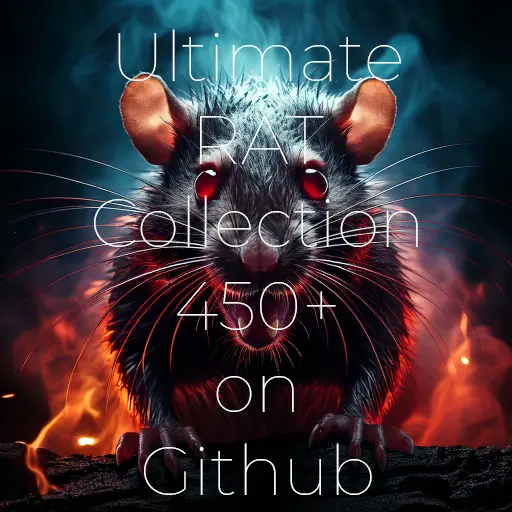450+ RATs - Free "Ultimate Rat Collection"
When it comes to cybersecurity research, few resources are as extensive and controversial as the Ultimate RAT Collection on GitHub.

Let’s call it what it is: the Ultimate RAT Collection is a public museum of script kiddie malware. Over 450 remote access trojans—most of them basic, reused, and widely available in every corner of the internet—now organized and archived for anyone to study, modify, or run. And that’s exactly what makes it relevant.
The myth that serious cybersecurity threats come from highly sophisticated adversaries writing custom malware is just that—a myth. Most actual breaches happen because some kid ran a builder they downloaded off GitHub, pasted a Discord webhook, and hit send. It’s not elegant. It’s not elite. It’s effective. Because the bar for causing damage online is low, and this repo is a reminder of how absurdly accessible it all is.
Want proof? This collection includes builders like:
- NjRAT: Still circulating in the wild after a decade. Used by low-level threat actors across the Middle East and Asia.
- NanoCore: Originally sold commercially, leaked, and now abused in phishing campaigns and commodity malware bundles.
- Venom RAT: A classic .NET backdoor frequently bundled with cryptominers.
- Quasar and AsyncRAT: Open-source “legit” remote tools now twisted into stealthy payloads used in red team and criminal ops alike.
Many of these are drag-and-drop malware kits: no real skill is required. That’s the point. Security teams spend millions trying to secure endpoints but still get popped by decade-old VB6 projects wrapped in ConfuserEx. So is this repo for “educational purposes”? Sure. But that phrase is basically legal padding. What matters is that this archive reflects how attacks actually happen. Not in theory. Not in lab-controlled adversary emulations. But in messy, disposable, copy-pasted code that’s been reused for years.
You don’t need to justify why a collection like this should exist. The internet is open. Information spreads. You can’t moralize access to malware when half of it’s floating around YouTube anyway. The only difference here is curation. Someone took the time to catalog, screenshot, and label what most people either ignore or run blindly.
And if someone wants to use these tools maliciously? They already are. Putting them in one place doesn’t create bad actors—it just exposes what’s already out there. Security people pretending otherwise are either naive or dishonest.




